If you have often contemplated picking up a rod for the first time and getting out on the bank and giving it a try, but just feel intimidated or overwhelmed by the sheer amount of fishing tackle, different methods, conflicting opinions, then you’re in the right place.
In this article I want to dispel any reservations you might have, discuss the items of tackle you will need and convince you to get out there and confidently give it a try, I promise, you won’t be disappointed once you have caught your first fish.
Choose the right venue
To start your angling adventures, visit a local, well-stocked fishery. You can visit your local canal or river (except during the 15th March-15th June inclusive closed season), but for ease and facilities on offer, a commercial is a good place to start! Before setting up, have a good look around, inspect the different areas of the lakes, see what other anglers are doing and catching. Ask questions, most fishery managers and other anglers are approachable and happy to help.
These venues often have facilities ideal for newcomers and are populated with fish species like carp, bream, and roach. Local tackle shops will also help get you off on the right foot, and they can recommend beginner-friendly locations and advise on effective baits.
CHECK OUT THE BEST VENUES FOR BEGINNERS IN OUR WHERE TO FISH GUIDE.

What you need to go fishing
Visit any tackle shop or fishing website and you’ll be met with numerous options of rods, reels and terminal tackle. Strip it back to what you need, and it’s really very simple.
The first thing you require, as with any type of fishing in the UK, is an environment agency rod license, this can be purchased online, with daily, weekly or annual durations. Next is to decide what method you want to start with.
Float fishing is the most classic route, a rod, a reel, a float and a few hooks and you’re away. It’s visual, it's active, and it teaches you loads while keeping you engaged. Alternatively, you could start with feeder fishing, great if you prefer to sit back a bit and watch the tip of your rod for bites. There’s no wrong answer. Pick one, learn the ropes, and expand from there.
Fishing might look complicated, but at its heart it’s beautifully simple and you can make it what you want. With a modest investment, you'll soon be enjoying the thump of a fish on the end of your line.
TAKE A LOOK AT OUR PICK OF THE BEST FISHING RODS FOR BEGINNERS.
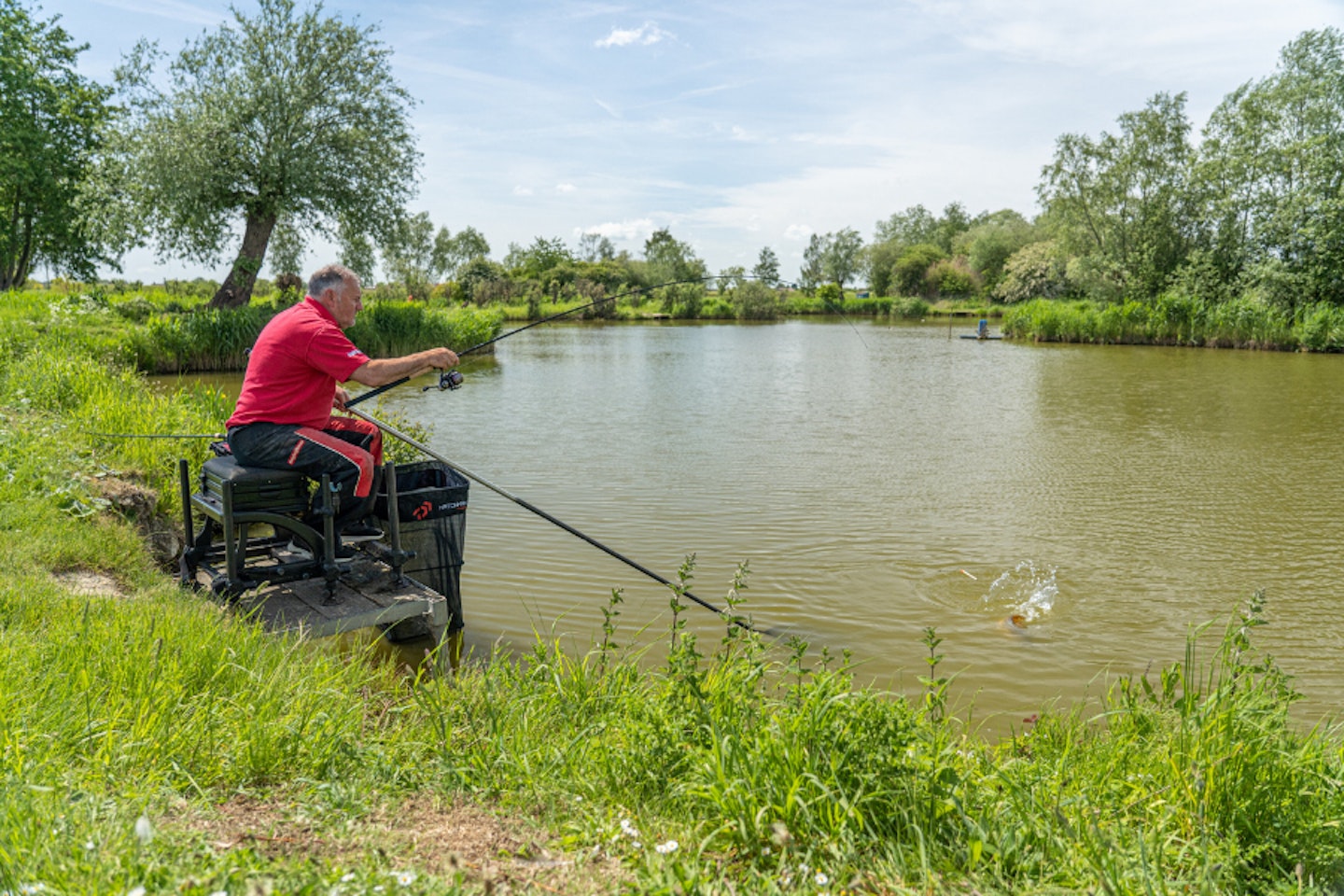
The best fishing rods for beginners
Float and feeder rods may not seem too dissimilar, but they differ greatly. The main differences will be that a feeder rod features a quiver tip for bite detection whereas a float rod doesn’t require one as a float is the bite indicator.
Float rods are generally longer than feeder rods, starting at 10ft, the length is required to assist in casting much lighter floats compared to feeders.
Feeder rods can be shorter, as short as 7ft. These are designed for much closer feeder fishing than a longer 11ft or 12ft feeder rod, these are more suited to longer range, but doesn’t mean they can’t fish short, they’re just a little less manoeuvrable.
If you're just starting out in fishing and looking for a rod that won’t break the bank, the Daiwa Matchman Method Rod is a brilliant place to begin. It’s priced under £50, but you’d never guess that by how it looks or performs.
Everything about it feels solid and well-made, from the comfortable cork handle to the metal guides that help your line run smoothly. It’s light in the hand, easy to cast, and has a lovely bend when you hook into a fish, which makes playing them feel exciting without being overwhelming.
Even bigger carp, the rod handles them with no problem at all. It’s strong where it needs to be, but soft enough to stop fish pulling off the hook.
If you’ve got £50 to spend and want to get out fishing with confidence, this rod really is hard to beat. Pair it with a basic reel and a bit of bait, and you’re good to go
Read our full Daiwa Matchman 9ft Mini Method review.
Pros
- Lovely fish playing action.
- Perfect for commercials.
Cons
- Will struggle to cast a larger feeder any distance.
| Casting weight: | 30g |
| Tips supplied: | Carbon 1oz and 1.5oz |
The Preston Dura Carp Feeder is one of those rods that punches well above its price tag. Aimed at commercial fishery carp fishing, it’s built for the job, light, forgiving, and easy to handle. For a beginner wanting to catch carp without spending silly money, it’s a cracking place to start.
Casting feels clean and smooth, with just enough softness in the blank to stop anything feeling clumsy. It’s accurate, too. On test, it superseded my expectations, it is just a great little rod and perfect for all levels of anglers who just want to go and catch some fish on the feeder without worrying about their rod letting them down!
Smaller carp and F1s kept coming all morning, and while they’re notorious for slipping the hook, the Dura Carp held firm. For the money, it’s hard to fault. You can go cheaper, sure, but spend just a little more, and you get something that fishes properly. And that makes all the difference.
_
Read our full Preston Innovations Dura Carp Feeder review._
Pros
- Affordable yet high quality
- Durable and capable, with the ability to cast distance if required
Cons
- Lacks a lighter quiver tip
| Casting weight: | 20-60g |
| ps supplied: | 1oz and 2oz |
Best beginner float fishing rod
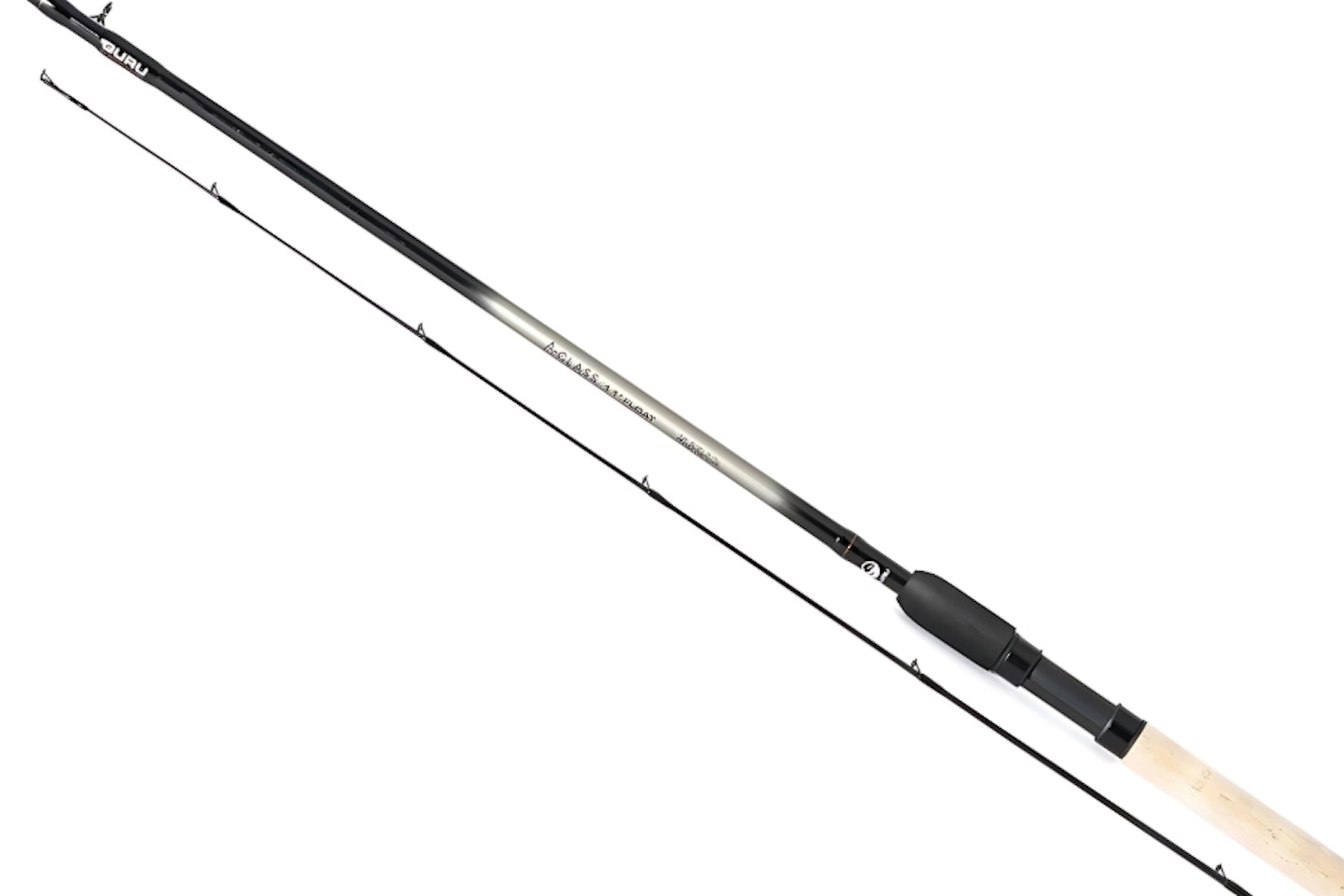
www.total-fishing-tackle.com
If you’re just getting into pellet waggler fishing of even general float fishing for that matter, the Guru A-Class is a solid place to start. It’s affordable without feeling cheap, and more importantly, it’s built properly, strong where it needs to be, soft where it matters.
The 24T carbon blank gives it a nice balance between power and feel, and the line glides through cleanly thanks to the titanium oxide guides. Everything’s where it should be, a comfy cork and EVA handle, a sturdy reel seat, and lengths to suit most pegs. Whether you’re flicking out a waggler at 10ft or need a bit more reach at 12ft, there’s a version that’ll do the job. It’s simple, tidy, and just works, which is exactly what you want when you're still getting your bearings.
Pros
- Powerful through action, easily cast big wagglers
- Lots of power in reserve for for taming big fish under the rod tip
Cons
- Maybe a little too powerful for smaller fish like F1s and carassio
Best beginner pellet waggler rod under £100
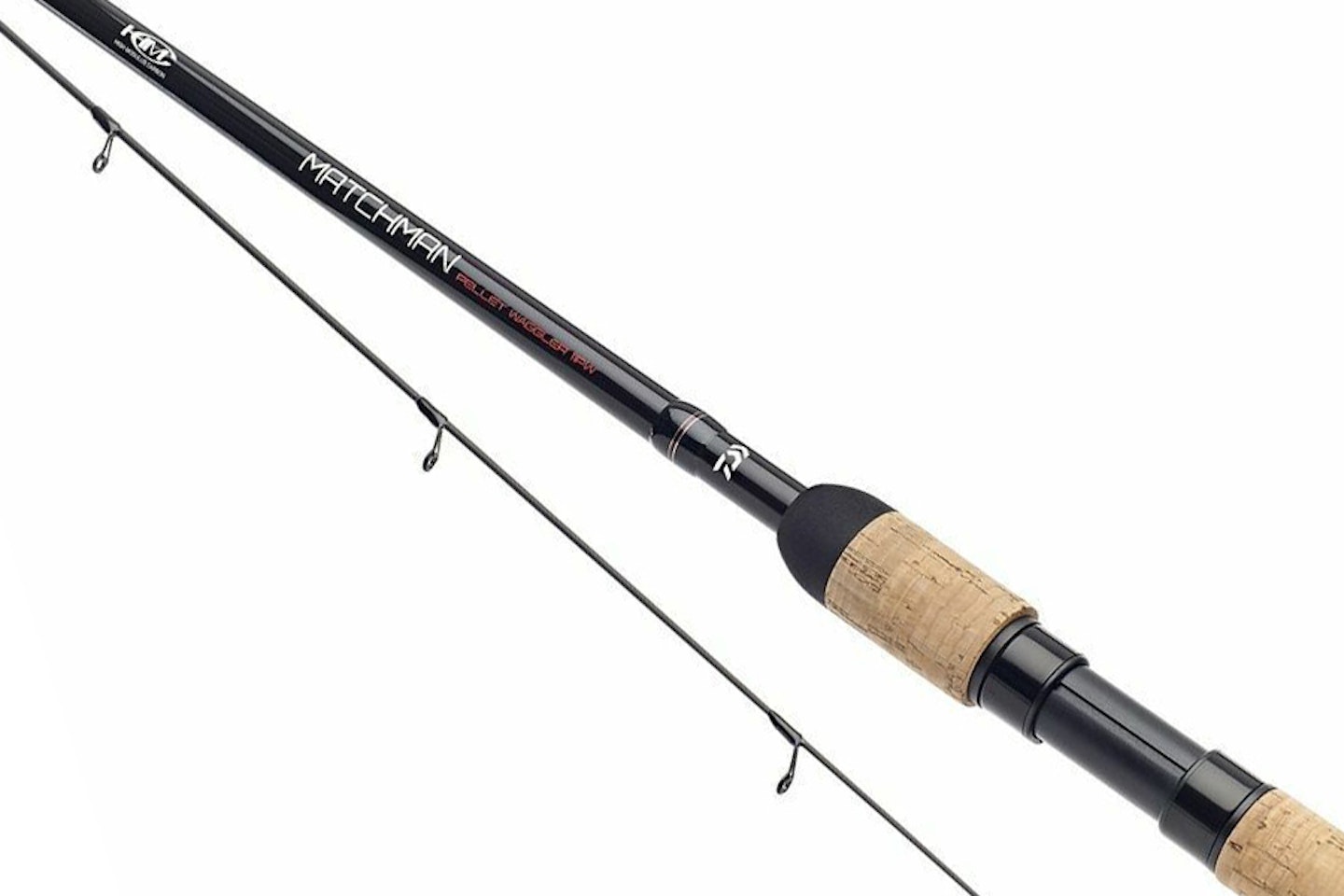
www.total-fishing-tackle.com
The Daiwa Matchman Pellet Waggler is one of those rods that makes you double-check the price tag. It feels far better than it should for the money, offering a smooth action and solid build that beginners will appreciate straight away.
At 10ft, it’s ideal for smaller commercial waters and close-in work, where control and accuracy matter most. Step up to the 13ft version and you’ve got something with the reach to hit fish at range or even tackle chub and barbel on a river. Whichever length you go for, the Matchman gives you that bit of polish without emptying your wallet, perfect for newcomers looking to step in with confidence.
Pros
- Versatile range with 4 lengths to choose from to suit
- Through action to allow the use of lighter hooklengths
Cons
- The 13ft is a little cumbersome on smaller venues
CHOOSE THE RIGHT FEEDER ROD FOR THE JOB WITH OUR EXPERT GUIDE.
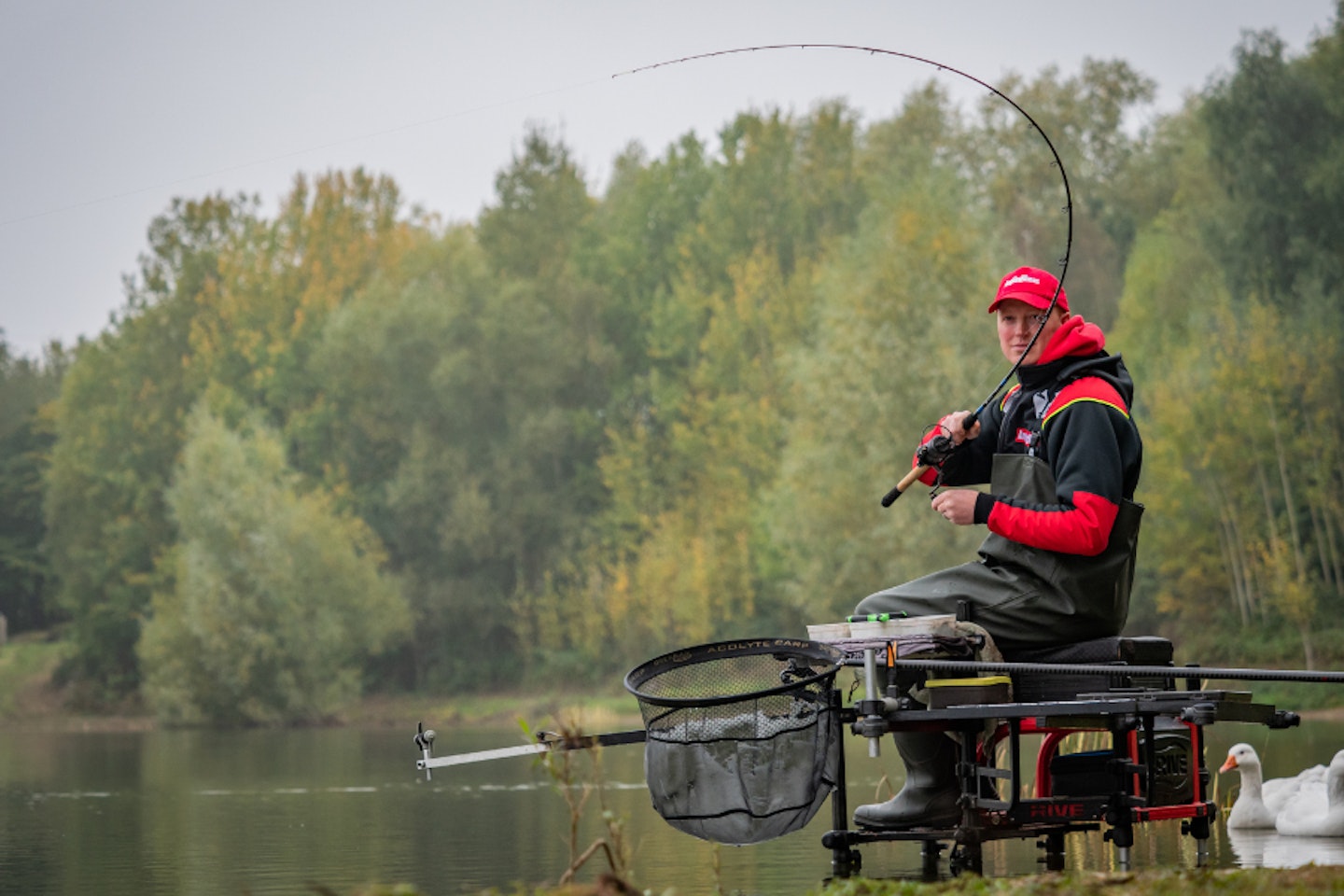
Best fishing reels for beginners
A fishing reel, whether it costs £30 or £300, will do the same basic job. Help you cast a line and reel a fish back in. Strip away the fancy materials, the refined drag systems and the glossy marketing, and their core function remains the same. That’s good news for beginners, because it means you don’t need to spend a fortune to start catching fish.
When you’re just starting out, what matters most is how the reel feels in the hand and how easily it lets you get on with the job. You want something simple, reliable, and versatile enough to let you try different methods.
There’s no need to obsess over what material it is made from, how much line it retrieves per wind or how many ball bearings it has. Just make sure it’s smooth enough to cast easily and has a half-decent drag that can slow down a fish when it takes off.
As your confidence builds, you’ll start to understand where a more refined reel could make a difference, maybe when you're casting longer, or needing more control under pressure. But for now, the best reel is the one that lets you enjoy your fishing without fuss. It’s a tool to learn with. Start simple, fish often, and when the time’s right, you’ll know exactly what you want to upgrade to.
Best beginner float fishing reel
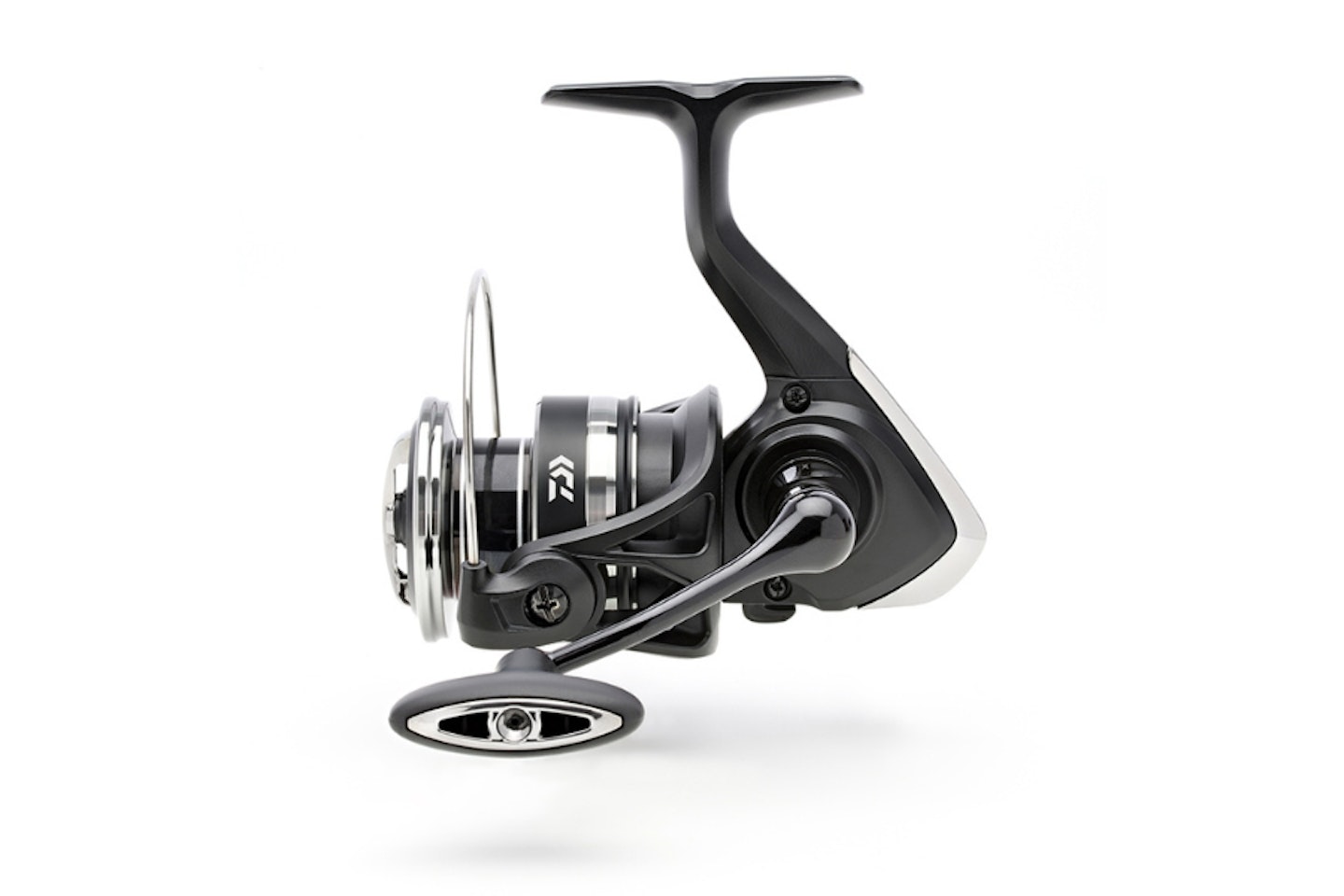
www.total-fishing-tackle.com
The Daiwa 25RZ reels are a cracking option for beginners wanting a dependable all-rounder without spending a fortune. Simple, solid and surprisingly versatile, they come in three sizes 2500, 3000, and 4000, giving you a reel for just about every job you’ll come across as you find your feet.
The 2500 is spot on for float work and light lure fishing, ideal if you're starting off on small stillwaters or rivers. If you’re looking to try feeder fishing or chucking heavier lures, the 3000 and 4000 versions give you a bit more grunt without losing the smoothness. A nice touch for beginners is the infinite anti-reverse, no awkward handle kickback when you’re striking or winding in, just clean control.
The handles are slim and tidy, with the smaller reel getting a simple I-shape and the bigger models coming with a chunkier T-shape for a bit more leverage. It’s not flashy kit, but it doesn’t need to be. For the price, the 25RZ gives you everything you need to get fishing, and that’s what matters.
Pros
- Brilliant beginner reel
- Simple, robust and reliable
Cons
- No spare spool
Best beginner feeder fishing reel
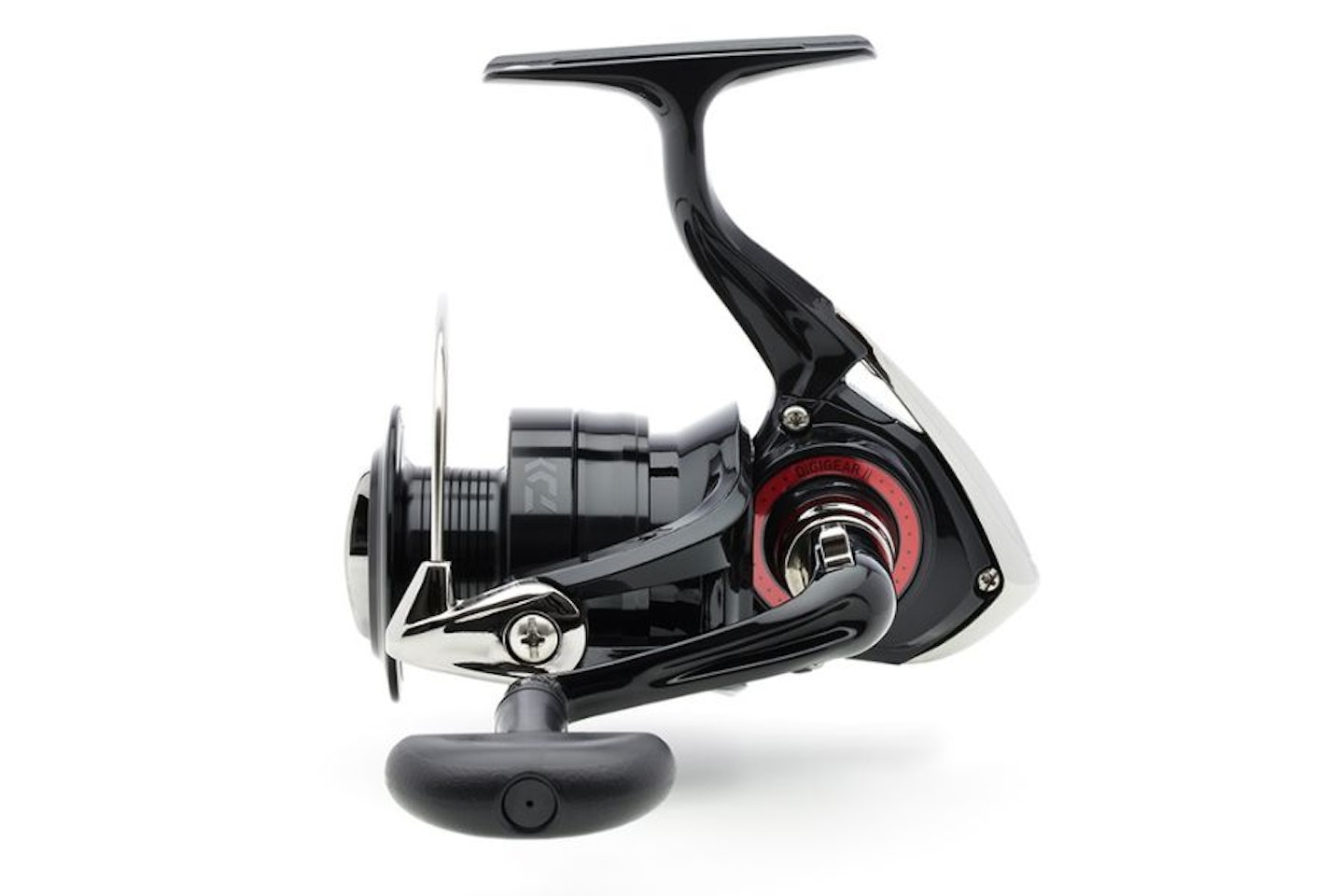
www.total-fishing-tackle.com
The Daiwa 23 Matchman Reel is one of those rare bits of kit that appears it should have a heftier price tag. The fact you can pick one up and still get change from £50 is almost daft, especially when you consider how well it performs. It comes in three sizes, each with a clear job in mind, and all of them feel spot on in the hand.
The 2500 is the lightest of the bunch, perfect for float fishing, flicking lures, or just setting up a youngster with something that won’t feel like a brick on the rod. The 3000 is the sweet spot, light enough for silverfish and general float work, but with enough backbone to launch a pellet waggler or tame a commercial carp.
If you’re only getting one reel to do it all, this is probably the one to choose!
The 4000 steps things up again. If you're chucking feeders on rivers or want a bit of extra grunt for distance work, this is your go-to. With a fast 95cm-per-turn retrieve, it’s efficient too. For a beginner wanting a reel that’s easy to use, versatile and built to last, the Matchman makes a very strong case.
Pros
- Great range of reels for all styles of angling.
- 4000 model ideal for any feeder fishing.
Cons
- No spare spool.
Best all round fishing reel for beginner
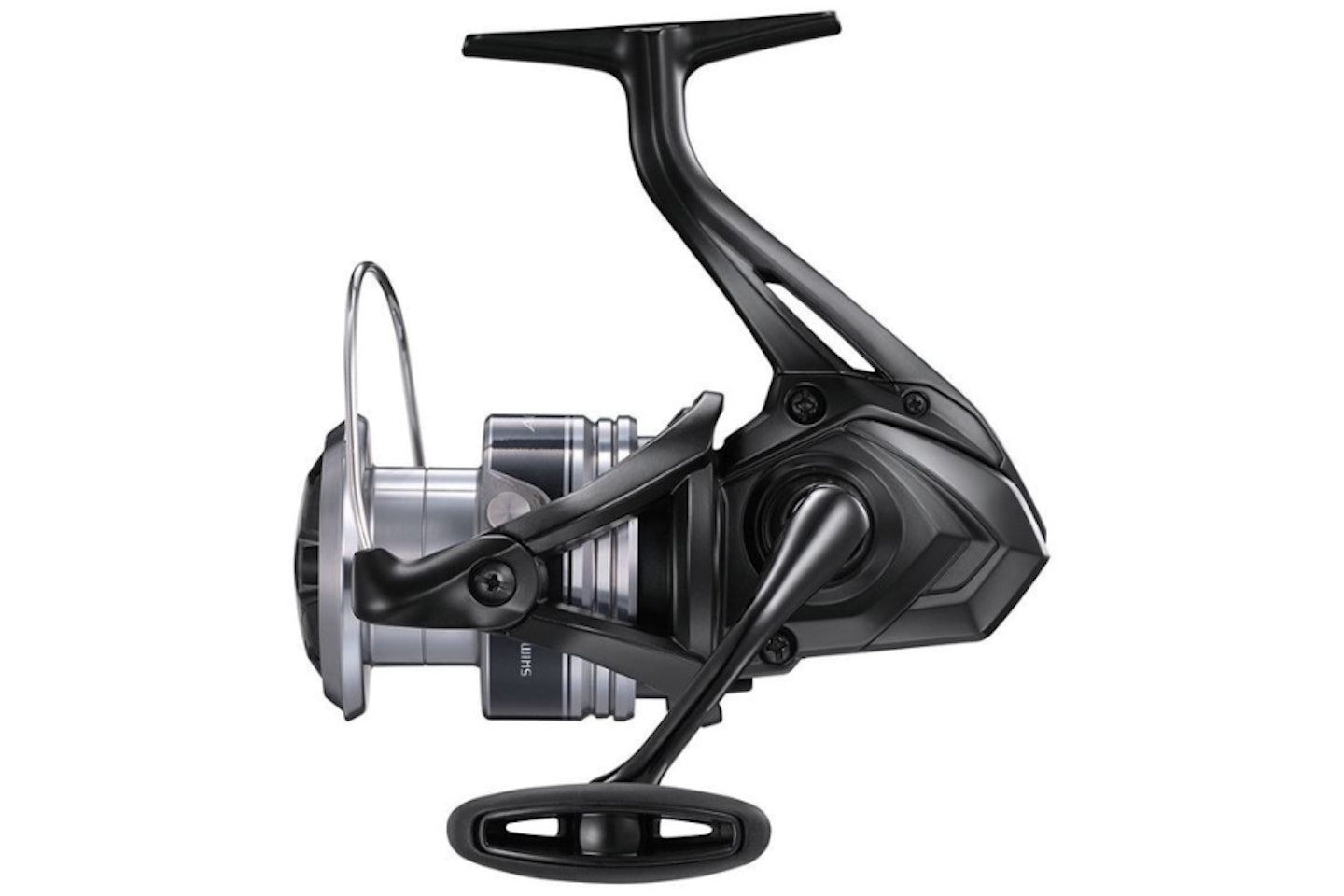
www.total-fishing-tackle.com
If you enjoy both float and feeder fishing, the Shimano Aero BB is ideal for all-round anglers, a reel that’ll do a bit of everything without costing a fortune, the Shimano Aero BB is a smart place to start.
It’s built on Shimano’s trusted Hagane Gear platform, which basically means it runs smooth and lasts well, something you’ll appreciate more as you catch more. The Aero BB also uses Shimano’s X-Ship system, which keeps winding smooth under pressure, ideal when you’re playing your first big fish.
The reel’s lightweight body and solid screw-in handle give it a firm, responsive feel, and there’s no annoying wobble in the handle thanks to the anti-reverse system. The spool’s designed to cast cleanly, and it comes with a reducer too, so you’re not wasting line if you're just using lighter setups.
There are three sizes, 3000 for float work, 4000 for general all-round use, and 5000 if you're slinging feeders out or targeting carp. It’s a cracking all-rounder, perfect for a beginner.
Pros
- Great all-round reel
- Multiple sizes available to suit
Cons
- Basic features
YOU'LL BE SURPRISED WHAT A QUALITY REEL YOU CAN PURCHASE FOR LESS THAN £75.

Other essential items of fishing tackle for beginners
Other than a comfy seat, which can be a garden or deck chair, you can choose to invest in a designated chair or a fishing seatbox in time, to get started all you need is something comfortable to perch on and a bait selection to tempt the fish.
All that is left are the little essentials, consumables you will use time and time again. Fishing tackle, like everything else, has evolved. Hundreds of items, each with its own purpose, some brilliant, some more specialised. But here’s the thing, as a beginner, you don’t need to worry about any of that. Not yet.
What you need now are the basics. The same gear every angler, no matter how experienced they are today, once started with. These are the bits that have stood the test of time. They caught fish back then, and they still catch them today.
Start with a landing net and a landing net handle. Simple enough, but essential for safely landing a fish and returning it to the water. A 16" or 18" spoon shaped landing net is ideal, and a 3m telescopic or put over landing net pole is ample.
Best landing net for beginners
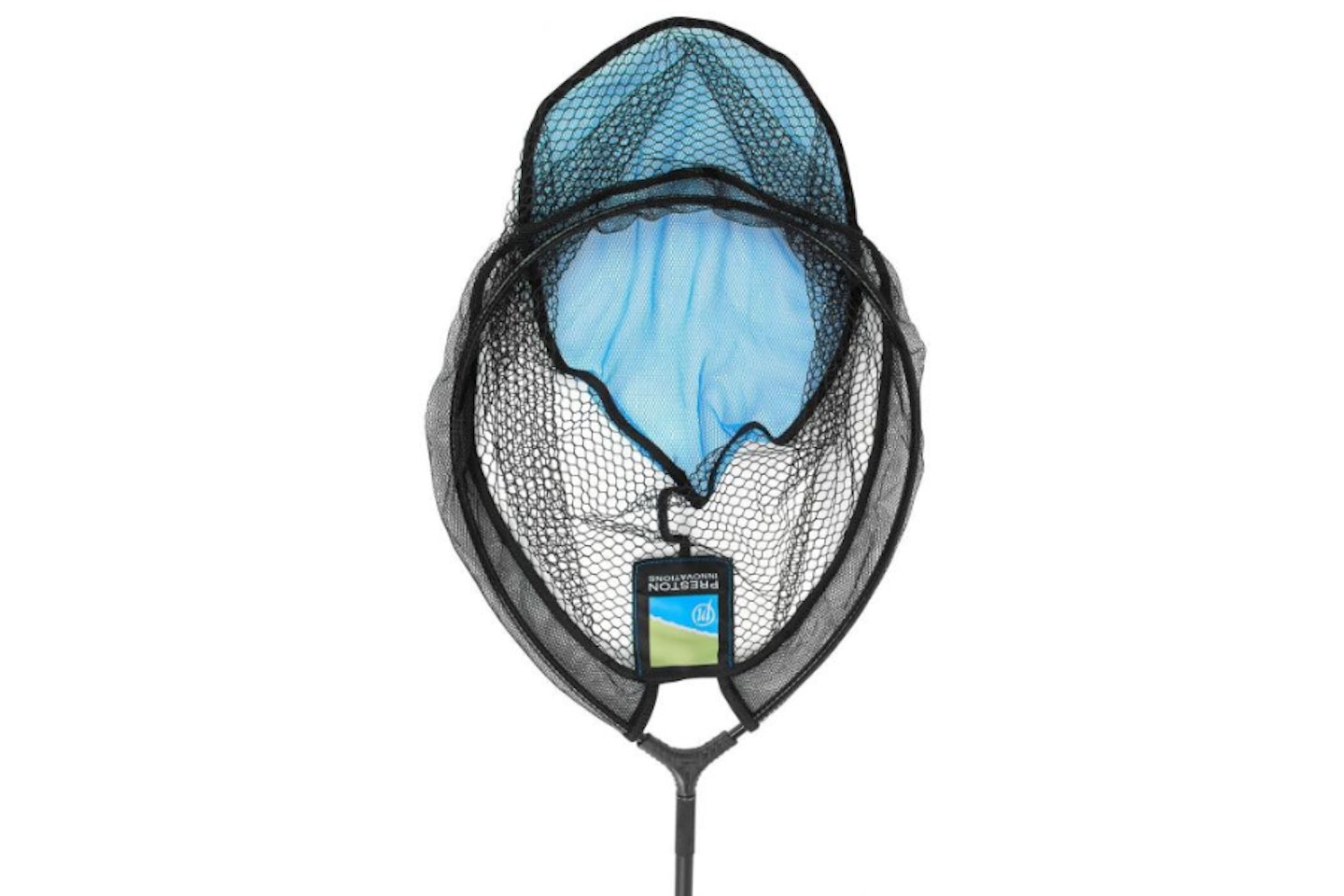
www.total-fishing-tackle.com
The Preston Match Landing Net Is built with a fine mesh base to keep hooks from tangling and damaging delicate mouths, ideal when you’re fishing for silvers or F1s with light gear or hair rigs. The sides are a wider mesh, so it slips through the water quickly, which makes a difference when you’re netting fish.
Pros
- Soft fine mesh base
- Wide mesh sides so net slips through water easier
Cons
- A little deep and can be a struggle with smaller fish
The MAP Generation Power 2.8m Telescopic Landing Net Handle is a proper workhorse, solid, dependable, and built to cope with just about anything you throw at it. Made from ultra-strong modulus carbon, it’s got the backbone for bigger fish and tougher venues, but still feels balanced and responsive in the hand. The three-section telescopic design gives you the full 2.8 metres when you need the reach, but it packs down neatly and tucks away without fuss. Comes with a bag, too.
Pros
- Compact 3 piece telescopic handle
- Strong and stiff
Cons
- Telescopic may not be to everyones preferance
A no-nonsense bit of kit built for serious work. The MAP Generation 3.0m Put Over Landing Net Handle gives you that extra reach when you need it, perfect for high platforms, deeper swims, or when using longer rods. It’s built using ultra-strong modulus carbon, so you’re getting the strength without the weight, and it’s got that crisp, solid feel that gives you confidence when you’re landing fish. The put-over design keeps things simple and sturdy, and the pinned thread rounds it off nicely.
Pros
- Put over design gives stength and stiffness
- Pinned thread keeps landing net sturgy and in position
Cons
- Can come apart when retrieving fish if not secured together properly
CHECK OUT OUR CHOICE OF THE BEST COARSE FISHING LANDING NETS.

Then there’s the disgorger, not the most glamorous bit of tackle, but one you’ll find yourself using more than you’d think. It’s for removing hooks cleanly from fish that have swallowed a little deeper than planned.
If you’re float fishing, you’ll need a small selection of floats in various sizes. Go for ‘loaded’ floats, they’ve already got most of the weight built in, so all you’ll need is a few split shot to fine-tune the balance. And don’t forget a plummet. It’s just a weight, but it lets you find the exact depth of your swim. Get that right, and your bait will be sat exactly where the fish are feeding.
Best beginner split shot
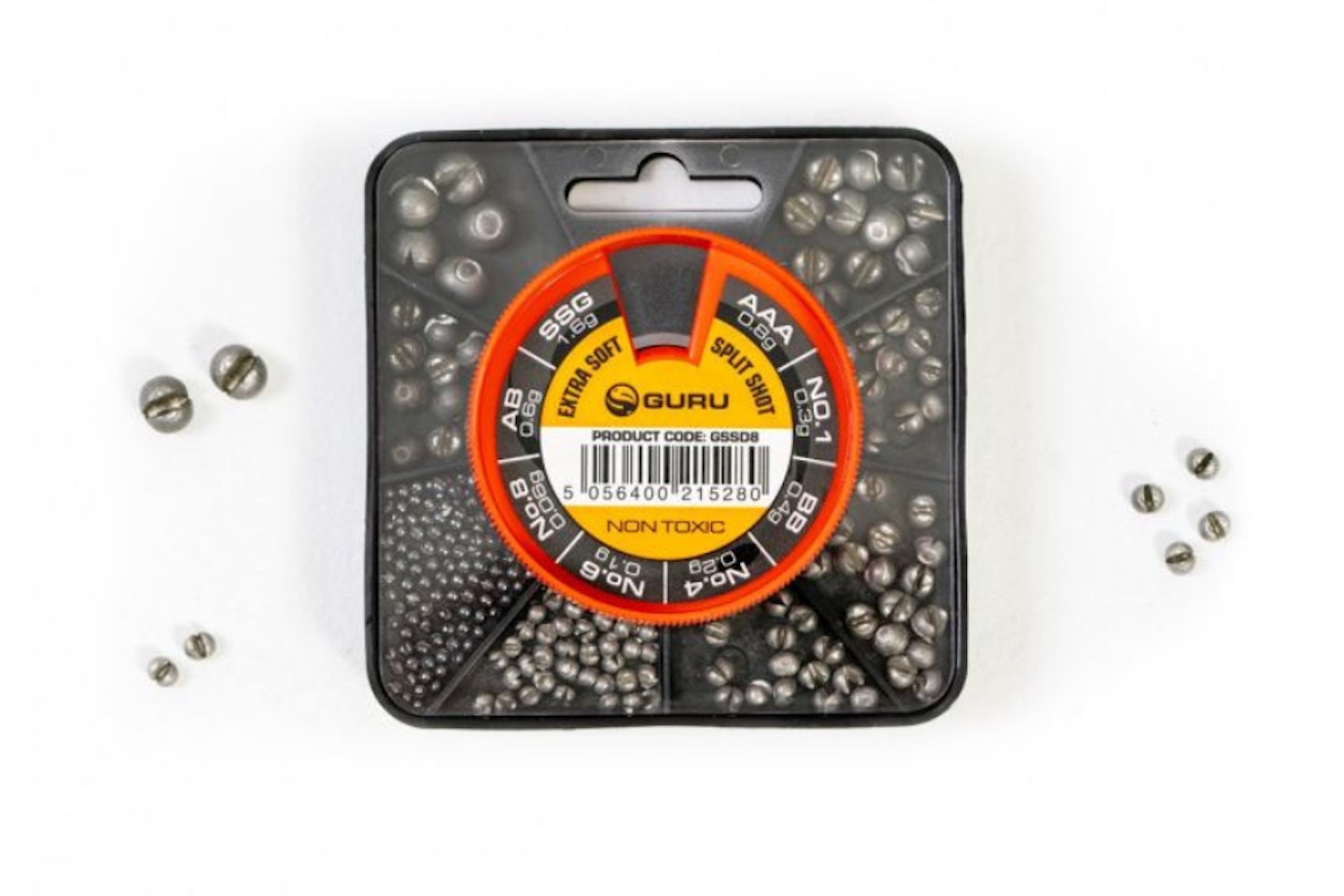
www.total-fishing-tackle.com
The Guru 8 Compartment Split Shot Dispenser covers you for just about every float fishing scenario. With eight clearly labelled compartments, from SSG down to No8, you’ve got the split shot you need to get the float balance just right, and the rotating dial makes it dead easy to grab the size you need without tipping half the lot out.
The shot itself is soft, non-toxic, and eco-friendly, so it goes on and comes off the line cleanly, without leaving a mark or flattening your line. Each one’s precisely cut to sit straight and true, with a neat little divot to help remove it without any faff.
Pros
- Easy dispenser for quick access
- 8 different sizes
Cons
- Are a little soft so can be difficut to remove if squeezed on too tight
CATCH SILVERS ON THE FLOAT WITH THE BEST FLOAT RODS FOR SILVERFISH.
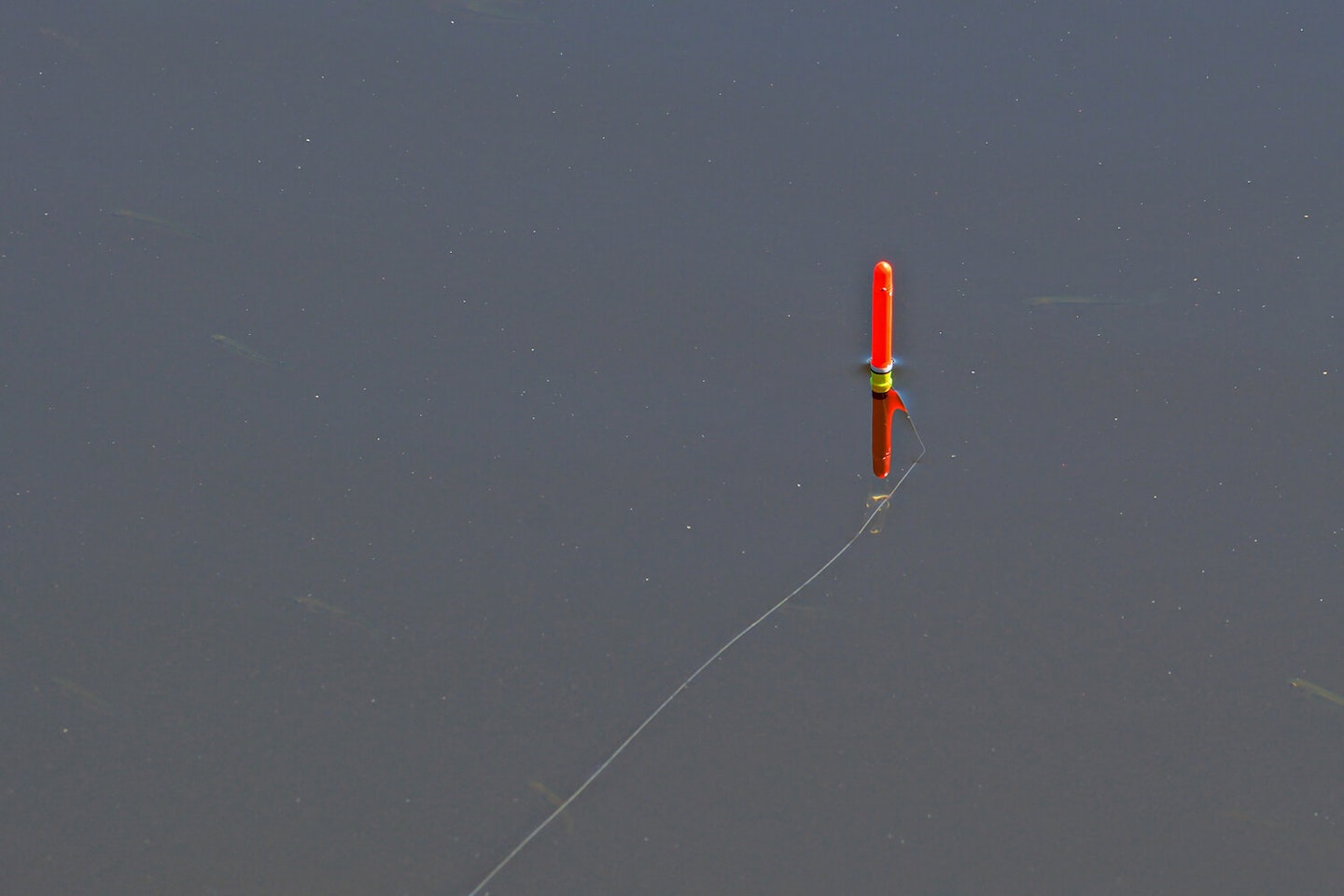
Hooklengths are another staple. You can tie your own, which is a satisfying skill to learn, if occasionally frustrating, or you can buy ready-tied ones, which these days are excellent. For float fishing light lines and fine hooks are perfect, most are tied 6" in length, for feeder fishing, go for shorter ones (around 4”) with a hair rig when using method or pellet feeders, and longer ones (about 15”) for open-end or block-end rigs where a slower, more natural fall is often better.
Best beginner float fishing hooklength

www.total-fishing-tackle.com
A float angler’s shortcut to sharp, tidy presentation. The Guru Super LWG Ready Rigs are a no nonesense, hooklength that is a staple in many anglers hooklength box. Pre-tied to durable N-Gauge line and armed with the razor-sharp, PTFE-coated SLWG hook.
Each rig is identical every time, which means one less variable to worry about. For beginners, that consistency is key. Allowing you to change a hooklength quickly without having to plumb the depth again.
The hook holds up across different species, from delicate roach to battle-hardened carp and F1s. With options in multiple line diameters and hook sizes, there’s room to step-up depending on the peg in front of you. Eight per pack, and they slot straight into the Guru rig case.
Pros
- Consistent 6" length enables to change hooklength without worrying about re plumbing
- SLWG hook, is light yet powerful and trusted by many anglers
Cons
- Only available in 6" so would have to tie your own if wanting longer hooklength
Best beginner hair rig hooklength

www.ebay.co.uk
Sharp, tidy, and ready to go straight from the packet. The Preston KKM-B Hair Rig Mag Store Rigs are built with care. Using the ever-reliable KKM-B hooks tied to Reflo Power line, so you know you’re getting strength and reliability where it matters. Whether it’s a bait band or a Rapid Stop on the end, they’re spot on for hair-rigging everything from hard pellets to soft hookers or even sweetcorn.
What makes these stand out is the organisation. Each pack comes on a rig stick that drops straight into a Mag Store box, keeping things neat and hassle-free on the bank. All the info you need, hook size, line diameter, and breaking strain, is clearly labelled too, so no guesswork involved.
The 4-inch versions are perfect for method or pellet feeder work, while the 15-inch ones are ideal for bomb, open-end feeder, or pellet waggler setups.
Pros
- Built with quality components
- Clearly labelled for organised storage
Cons
- Hook pattern is a preference and may not suit everyone
ALWAYS CHOOSE THE CORRECT HOOK PATTERN FOR YOUR FISHING.
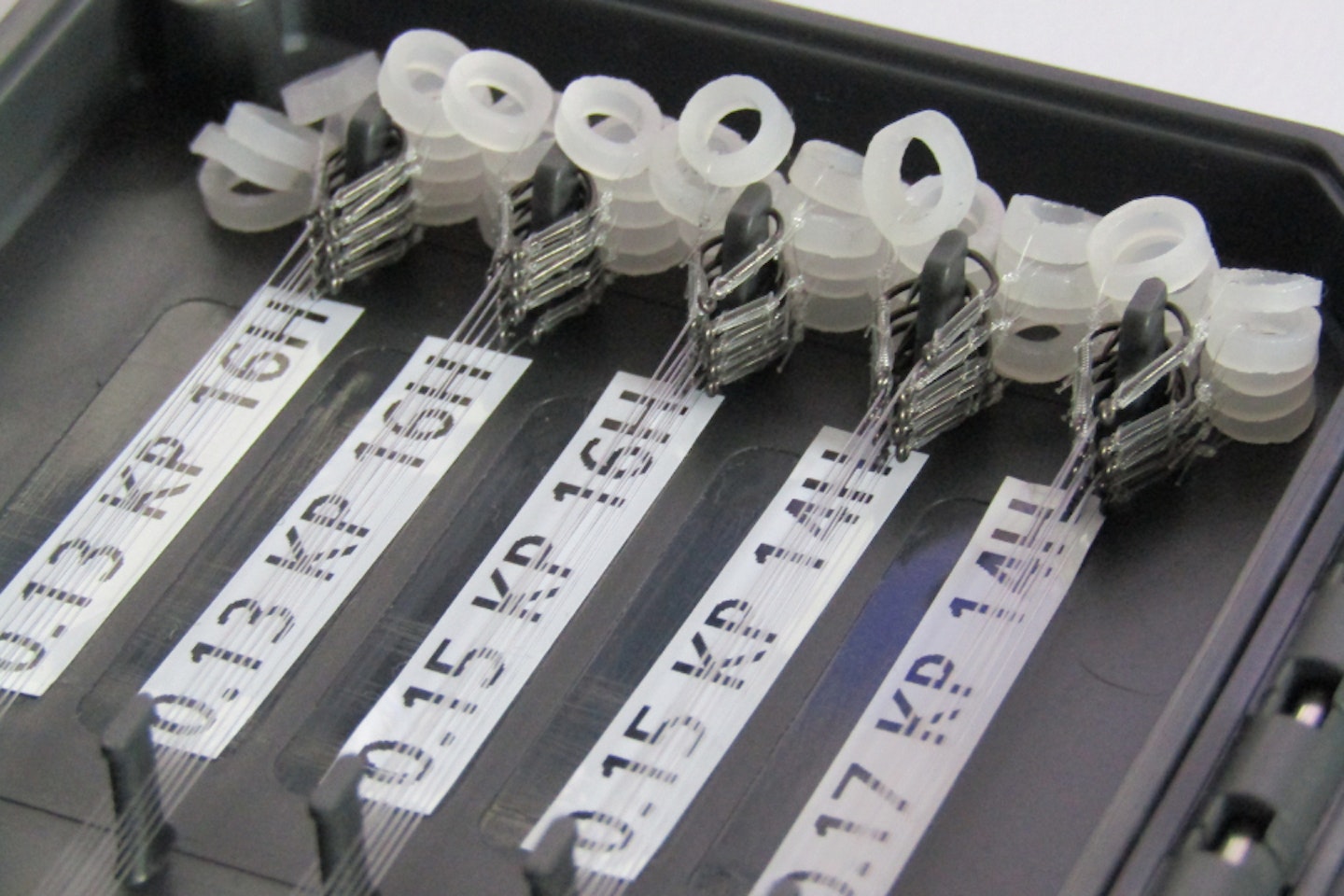
As for feeders, a selection of method, pellet, open-end, and block-end feeders in different weights will cover most situations. The idea is to match the feeder to the conditions, how you want to feed the swim, and how the fish are responding. And when they’re not responding at all, it’s handy to have a few leads in your box, so you can switch to a straight lead and a single hookbait.
LEARN HOW TO SET UP FOR FEEDER FISHING IN THIS EXPERT GUIDE.
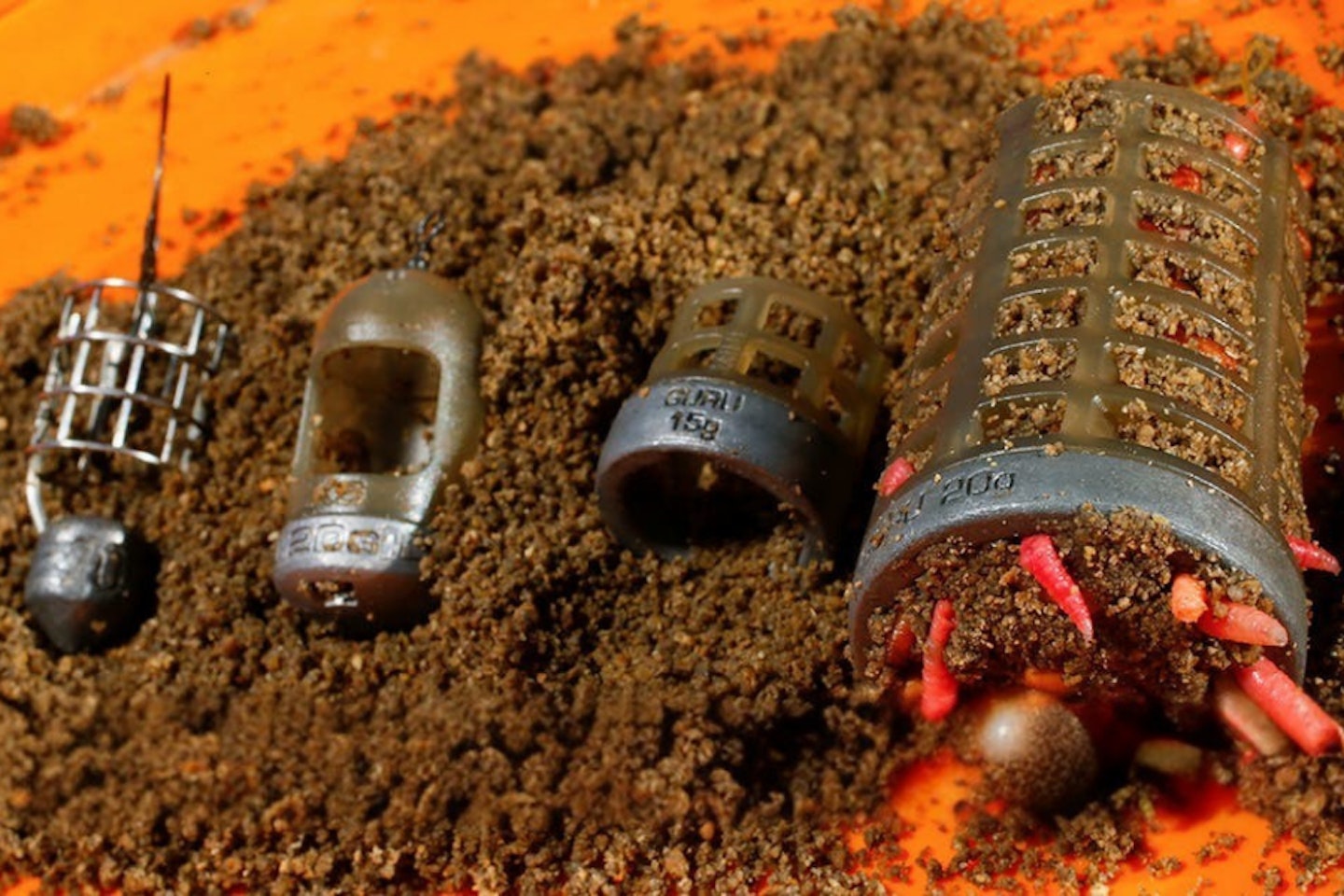
Lastly, pick up a few quick-change beads and hooklength swivels. They’ll tidy up your rigs and make swapping hooklengths easy. They also act as a buffer, stopping your feeder or lead from sliding too far up the line.
There you have it, a handful of genuinely useful, beginner-friendly bits of kit that’ll not only help you catch more fish, but also let you enjoy your time on the bank by keeping things simple and steering clear of over complication. The tackle world can feel a bit daunting at first, but smart choices like this cut through the gimmicks and focus on what really matters: learning, experimenting, and getting that rush of satisfaction when a fish finally hits the net. And hopefully, after that, you’ll be well and truly hooked.
MAKE SURE YOU SET UP YOUR FEEDER ROD PROPERLY WITH THIS HELPFUL GUIDE.
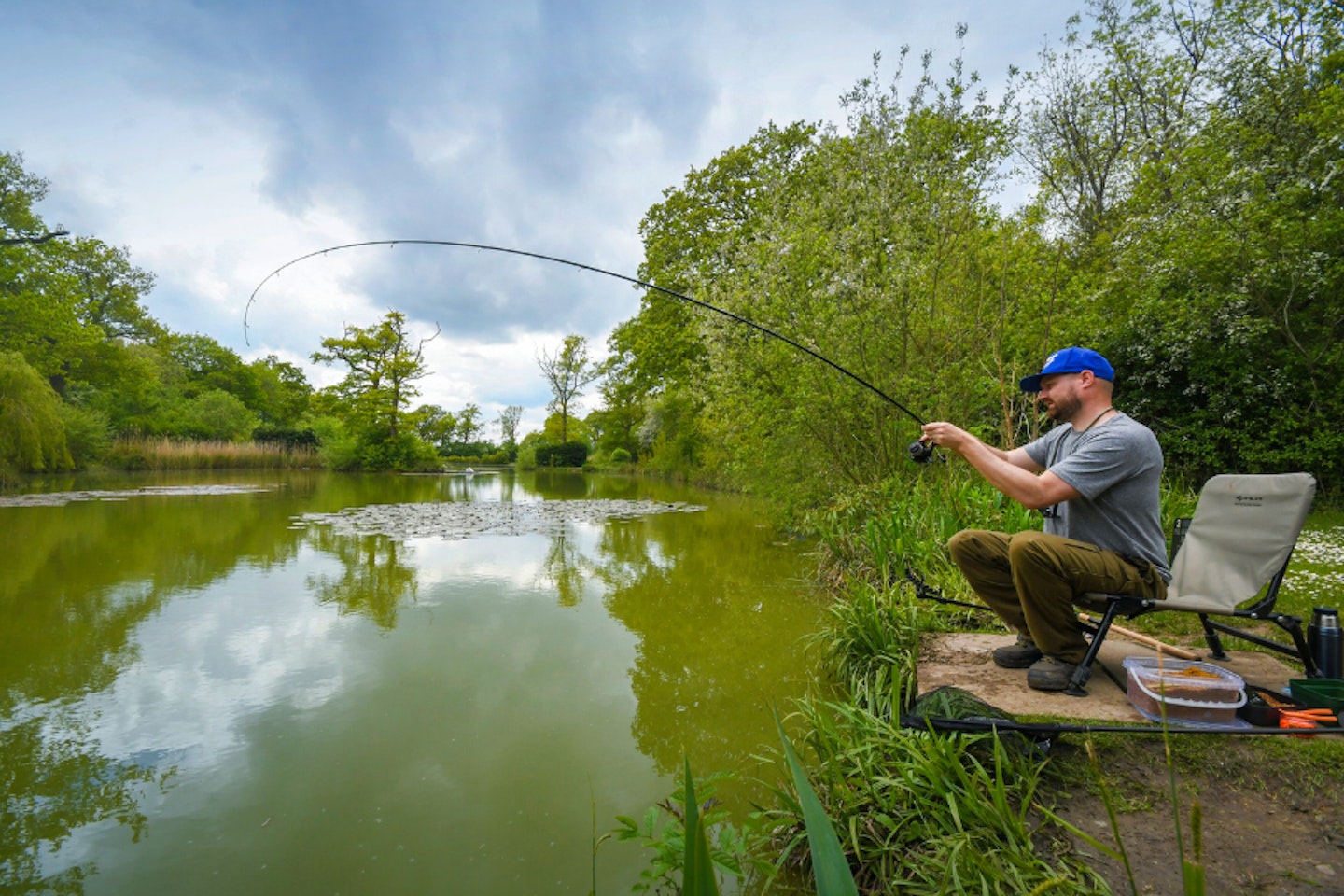
Author Jonathan Longden, is an experienced angler. With over 20 years experience in the tackle trade specialising in match and coarse fishing he has an extensive practical knowledge of the latest equipment and the specific needs of anglers. He currently occupies the role of digital content writer at Angling Times.

















